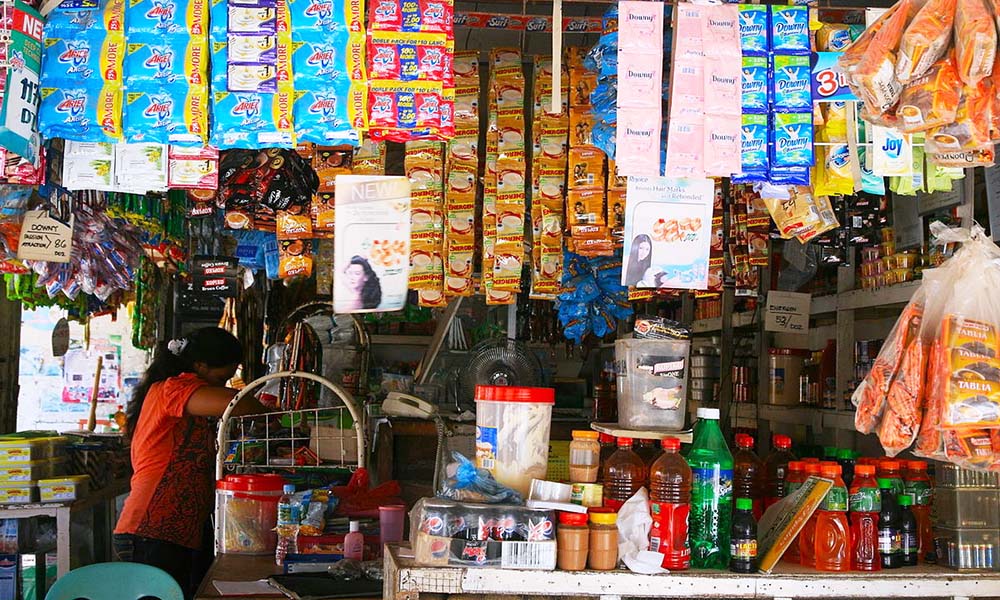
The sari-sari store as National First Aid Station

By Rex Catubig
IT has withstood change: defying passing time, current lifestyle; and the emergence of a generation with different pov’s, tastes and preferences.
Come hell or high water, it stands as the last bastion of status quo. Stubborn as the weed, it finds ways to sprout and gain ground even in the most unlikely, inhospitable places. Like a chameleon, it appears as the grab store in gas stations; the pop-up store in construction sites; the front-of-house store in subdivisions. And in its pervasive incursion in urban life: the modern convenience store.
Sari-sari is a revered component of our sundry way of life. What the foreigners condescendingly refer to as “sachet culture”. We buy small stuff and mostly upon demand or urgent need. The ants’ way of stocking for the rainy day is alien to our cultural DNA.
But it cannot be denied that the sari-sari is the national first aid station. It’s the instant responder in sudden predicament, providing: cp load for texting; a sachet of Magic Sarap to turn food appetizing; soft drinks in a plastic bag to relieve thirst; a small can of sardines, an egg or two, or a pack of Lucky Me instant noodles to ease hunger–the list goes as long as the row of sachets that hung all around the store.
True, sari-sari culture may not be cost effective as “tingi” or piecemeal buying could end up more expensive. But single-use items are practical in the context of viability over time. Due to heat and humidity, large items that cannot be consumed right away or need cool storage can spoil easily; or in the case of powder or granules, they coagulate and harden. And just how much can you afford to buy? Where would you keep them in a household that hardly has elbow room?
Weighing these, the consumers have the caveat as to what best works for them. In fairness, the new trend of bulk buying and sari-sari store fair, favors the small sari-sari owners and enables them to stock up on supplies even with meager capital. The discounts on top of cheap prices stretch their buying power—and ideally, the savings are passed on to the sari-sari consumers as well.
Looking back in retrospect, before the ubiquitous 7/11 and the super stores mushroomed, our barrio featured a hole-in-the-wall, mom-and-pop store called garita. It was the rescue center when my aunt would run out of a condiment in the middle of cooking. “Laka pad si atchi Puring ta mangaliw kay tinggal ya tuka”, she would order our houseboy.
Since it was largely unattended, so you just holler, “Mangaliw ak pa!”. And like a genie, the seller would materialize out of nowhere.
The store had benches in front, parallel to each other. It was the roosting place of barrio folk: in the morning to smoke Fighter, Camel, or Marka Niyog and discuss life’s state of affairs; and in the afternoon, to play dama that segued to drinking Sioktong or Cuatro Cantos while waiting for the cobrador to announce the winning number in Jueteng.
Yes, it was the primeval convenience store without the pretensions.
The sari-sari or garita that was reinvented as a convenience store, and taken to the next level as a supermarket, has indeed come a long way. As it traversed its track, it ferried a boxful of pleasant memories depicting a way of life predicated on petty life and death emergencies, that it addressed with urgency. Got a headache? Maybe you’re hungry. Get Cortal and Carne Norte from Nana Pacing.
However, the garita is also the precursor of the much-deplored custom of “lista” or “utang”. This practice has two sides: one saves you from a cash crisis while the other pulls you into compulsive buying. Either way, it drowns the resolve to stick to the budget.
Ironically, as the sari-sari lifeline gets cut off, before you can recite the Our Father, the peripatetic Bombay lifeguard throws you a salva vida.
Thus, the sari-sari series continues.










